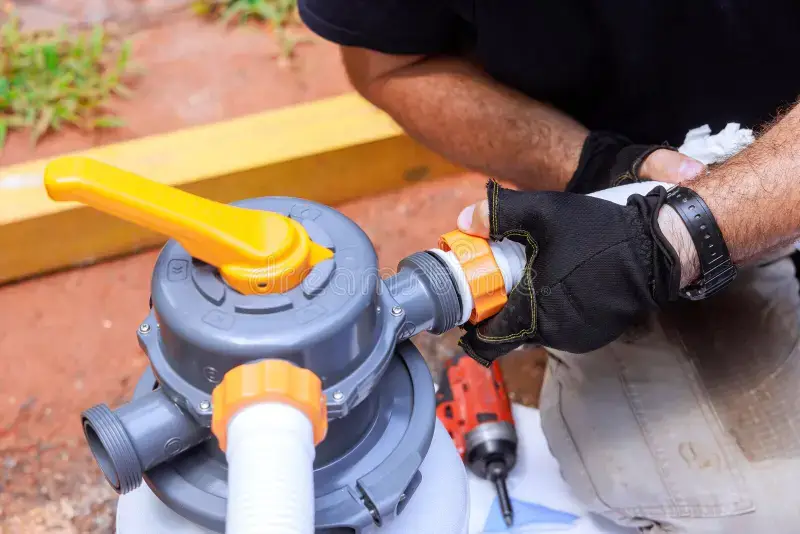Your pool vacuum head is one of the most overlooked yet essential cleaning tools in your maintenance setup. Whether you’re a homeowner in Punta Gorda, Port Charlotte, or North Port, understanding the different types of vacuum heads — and knowing when to replace them — can save you time, effort, and equipment damage.

Common Pool Vacuum Head Types
1. Flexible Vacuum Heads (for Concrete Pools)
These are the heavy-duty workhorses of pool cleaning. They bend slightly to contour to uneven pool surfaces and are ideal for gunite or plaster pools.
- Pros: Excellent for deep cleaning; durable wheels; even suction.
- Cons: Too heavy for vinyl or fiberglass pools.
- Replacement Signs: Worn wheels, cracks in the body, or uneven suction.
2. Vinyl Pool Vacuum Heads
These have soft bristles instead of wheels to prevent tearing or scratching vinyl liners. They’re lightweight and gentle but still effective for dirt and debris.
- Pros: Safe for delicate liners; easy to maneuver.
- Cons: Not ideal for heavy debris or algae buildup.
- Replacement Signs: Flattened bristles or split plastic housing.
3. Weighted Triangle Heads
Popular for residential pools, triangle heads reach corners and steps easily. They’re often transparent, helping you see debris as you vacuum.
- Pros: Great visibility; perfect for corners and edges.
- Cons: Can be harder to use on large, flat surfaces.
- Replacement Signs: Clouded or cracked plastic, worn bristles, or poor suction performance.
4. Automatic Suction Heads
These connect to your skimmer or suction line and move automatically, cleaning as they go. While not technically “manual heads,” they serve the same purpose for low-effort cleaning.
- Pros: Time-saving; consistent coverage.
- Cons: Less precise control; may miss tight areas.
- Replacement Signs: Reduced mobility, loose hoses, or damaged fins.
5. Brush-Style Heads
Ideal for algae-prone or rough-surface pools, these heads combine scrubbing power with suction for a deep clean.
- Pros: Removes fine sediment and algae; dual-purpose design.
- Cons: Requires more manual effort.
- Replacement Signs: Bent bristles or loss of suction due to cracks.
How to Know It’s Time to Replace Your Vacuum Head
Even high-quality vacuum heads wear out over time. Look for these telltale signs:
- Cracks or leaks in the housing.
- Worn or missing wheels/bristles that reduce contact with the pool surface.
- Uneven suction or air bubbles in the hose.
- Difficulty maneuvering or poor debris pickup.
Pro Tip for Florida Owners: Heat and UV exposure can make plastic brittle faster. Store your vacuum head in the shade or a covered shed after use to extend its life.
Maintenance Tips to Extend Life
- Rinse thoroughly after every use to remove chlorine and debris.
- Inspect connections for sand or grit that can cause leaks.
- Avoid dragging across rough surfaces.
- Store flat to prevent warping.
Final Thoughts
Your pool vacuum head plays a crucial role in maintaining clean, healthy water. Whether you prefer a flexible model for concrete or a brush head for vinyl, routine inspection and timely replacement keep your system running efficiently. For professional-grade cleaning or if your vacuum head shows consistent suction issues, consider consulting a Charlotte County pool maintenance technician for expert advice.
Meta Description: Learn about different pool vacuum head types, how to maintain them, and when it’s time to replace your pool vacuum head for better cleaning performance.
Image Caption: Technician inspecting a flexible pool vacuum head beside a backyard pool in Port Charlotte.
Alt Text: pool vacuum head types Florida maintenance guide
Word Count: ~1,020
